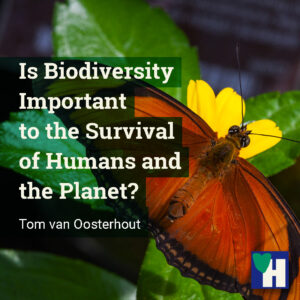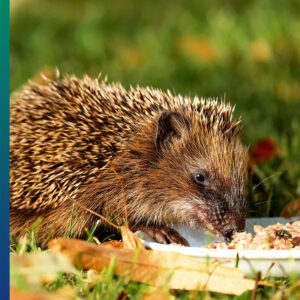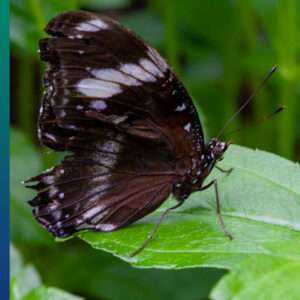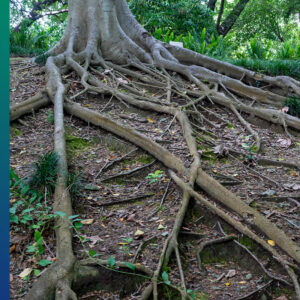
During the past 200 years, humans had a substantial and not very positive impact on biodiversity. Our modern lifestyle, with sprawling cities and infrastructure, with our lighthearted production and consumption attitudes, pushed biodiversity to the brink.
With this, we produced substantial risks. Even our and the planets’ survival is at risk. Burning fossil fuels and spreading around millions of tonnes of chemical poisons jeopardize our existence as a species.
The issue is that the loss of biodiversity is at the core of the risks we as humans face. We have to curb our daily pleasures and negligence.
It is time we change our attitude and behavior to a more sustainable type of modern life. We need to restore the biodiversity which conditions our very existence.
Related: Protect the 1.000.000 Endangered Species of the World.
Some of the links are affiliate links. As an affiliate associate, we earn a commission when you purchase any of the products offered through the shared links at no extra cost for you. This helps us maintain this website.
Table of contents
Is Biodiversity Important?
The answer to the question of why biodiversity is important is simple: because it is essential to our survival. The complexity is in the way humans relate to biodiversity. The individual challenge is that we practice what we preach. The social challenge is that we understand the advantages of collective action. Nature’s challenge is that we subject our ambitions to their capacities.
Support wildlife in the garden

Millions of people have a house with a garden. Sometimes even 2 gardens. However small our individual contribution to biodiversity appears to be, all these small gardens taken together, are a formidable biodiversity hotspot.
There are all kinds of ways we can attract wildlife to our garden. A variety of flowers in our garden attracts bees, wasps, and butterflies. These are important for pollinating fruit trees and vegetable plants.
A large variety of plants also contributes to proper soil and water management. And a diversity of plants attracts birds who control the good and the bad insects in your garden.
The variety of plants and animal life in your garden – the biodiversity in your garden – makes the management of your garden a lot easier.
Related: Attract Wildlife to our Garden to Promote Biodiversity in a Diverting Way.
Soil conservation
In conventional gardens, people use pesticides and other chemicals to control bugs, weeds, and plant diseases. The effects of garden management with chemicals are, however, devastating for the micro-ecosystem of our garden.
To protect our soil requires some long-term planning. Hannie and I started by establishing the quality of the soil: it was very poor. To enrich the soil we needed fertilizer.
For this, we use 2 compost heaps. One heap for maturing, the other for everyday use. This is only possible because we buy and eat organic food. It makes no sense to produce compost with conventional food on which pesticides have been used.
We also bought organic fertilizer and organic soil to enrich the garden. Although the results are still limited, we expect they will improve in time.
Related: How to Start Organic Composting at Home Immediately
Water conservation

Do not eat meat! That is the best way to conserve water worldwide. Conserving water is a way to conserve biodiversity. To conserve water also means that we take care not to pollute water and its natural systems.
On the small scale of your personal life, you can manage water in various ways. We do not shower every day and usually for no longer than 5 minutes. We hardly get dirty from the work we do or the life we lead.
In the sink in the kitchen, we use a bucket to capture the water when we wash our hands and kitchen utensils. The water from the bucket is used to moisture the compost heaps.
When we shop in a supermarket, or even in an open-air market, we have no clue how much water is used to produce the stuff we buy. This is a serious handicap when we want to buy food with the conservation of water and biodiversity in our minds.
For example, far more water is used to produce potatoes or avocados than cereals. The production of sodas and beer also costs a lot of water. If only because most sodas and beer are sold in aluminum cans.
Related: Water Conservation Management is Crucial for a Sustainable Agriculture.
Collective action
In The Netherlands, we were members of the ecological cooperative ODIN. ODIN is a cooperative of producers, distributors, and consumers. They are all committed to the same ecological standards.
Here in Spain we participate in the Red Murciana de Semillas (RMDS). This is a cooperative aimed at reproducing rare and precious seeds, using ecological standards.
From RMDS we learned to manage the soil of our kitchen garden, to grow our own seeds and vegetables, and preserve the seeds for next season’s use.
We also learned in what time of year to sow seeds and which plants support each other and which don’t. Pre- and post-harvest preparation of the soil of the garden was part of the course we took. As well as producing our own compost.
At this moment we collect from our kitchen garden various types of basil, chives, rosemary, and some small carrots. The strawberries are not that good this year. But perhaps we have to wait until December.
We harvested one cucumber, one cantaloupe, and today one honeydew melon. There are also two green paprika ripening.
Our harvest is very modest. Which shows how difficult it is to grow a proper amount of ecological food. This is more clear when 2 different perspectives related to food production and biodiversity are introduced: permaculture farming and the relief of world hunger.
Related: Citizens Devoted to the Conservation of Biodiversity.
Permaculture farming

One of the major agricultural efforts to contribute to biodiversity is permaculture farming. As with all agriculture, permaculture is designed for biodiversity. However, in permaculture biodiversity is at its core.
Permaculture farming is a highly challenging type of agriculture. There are 5 steps at its core. The first is consistent and meticulous observation. The next step is the design of the permaculture system. This is always a local design because local conditions are always different.
Usually, the third step is the restoration of the soil and the plants that grow on it. Followed by the planning of the food the permaculture design needs to produce. Which is limited of course by the natural conditions. Finally, the value of the harvest has to be assessed to be able to determine whether our efforts have been worthwhile.
Related: What is Permaculture Farming and Why can it Save Biodiversity?
To curb world hunger
It is shameful that there are still people on the planet who have hardly anything to eat. The more when we realize that this is due to totally unnecessary commercial competition and political shenanigans.

In the meantime, agricultural multinationals try to coerce less developed countries to adopt pesticides and genetically modified seeds, which have been banned in most countries. This is a threat to proper feeding people because these products hamper the biodiversity people in these countries depend upon.
How can we contribute to curbing world hunger? We should start to eat less, and most certainly less meat. For example, we eat only twice a day. Our consumption of (organic) chicken, turkey, or fish is limited to once a week. We also only eat 100 to 150 grams of poultry and fish per session, per person.
We never eat anything after 5 or 6 p.m. And we exercise every day. Given the fact that obesity is the only real pandemic at this moment, this lifestyle seems sound advice for many.
The benefits of trees

The benefits of trees are manifold. Trees are the axis of biodiversity. They sequester carbon dioxide in exchange for the oxygen plants, animals and humans so desperately need.
Trees feed on each other and their leaves and fruits are food for many species, including humans. Not all trees can live together. However, it’s best to vary the trees as much as possible.
Once a mature forest is settled, the micro biodiversity of that forest will manage itself. No outside support is required.
Even when a forest is managed by humans for production wood, it’s best to keep the forest as varied as possible. Such variation contributes substantially to the quality of the wood and to biodiversity.
Related: 19 Reasons Why Trees are Vital to the World, including Us.
Low-carbon transportation
Another way we can contribute to the conservation of biodiversity is by changing our mobility attitudes and behavior. Why do we want everything instantly and always at our doorstep?
Do we really need the car? Walking and cycling are good exercising and conserve the planet.
Public transport vastly outweighs the disadvantages of personal modes of transport fueled by fossil energy sources.
Related: Low-Carbon Transportation is Not Enough, More is Urgently Required.
Why is biodiversity important?

Why is biodiversity important for our and the planets’ survival? Biodiversity supports our food supply. It also manages the air we breathe, the soil we walk on and grow our food on, and the water we drink.
The economic value of biodiversity is huge. Food is produced worldwide with a value of hundreds of billions of euros. Moreover, the medication people use comes for 40% from plants that grow in rainforests.
The air we breathe and the water we drink are priceless. Without them, we would not survive. And there are of course also the aesthetic qualities of biodiversity. The beauty of flora and fauna and the areas they freely use and support them: forests, rivers, lakes, oceans.
We must be careful with the biodiversity we have, restore it where necessary, and expand it where possible.
How do you try to contribute to biodiversity? Please write your ideas in the comment box below.


As a hobby gardener it saddens me when I see how much food is thrown away by supermarkets because I understand just how many resources – of all kinds – were required to make those products available. It’s downright shameful that governments haven’t yet found a way to out a stop to this.
Hi Kaylee,
In my view, it’s not the governments’ job to improve people’s and businesses’ food handling. Everybody carries his or her own responsibility. It should be nice if for once they would.
The really important issue in my article is that the way we produce our food needs a serious overhaul from the perspective of the improvement of biodiversity. This means for example that by law people and businesses are no longer allowed to claim any rights to any seeds produced.
Moreover, investments efforts must be made in the preservation of seeds of rare fruits and vegetables. Seeds of plants that improve biodiversity, and not destroy it.
Regards,
Tom